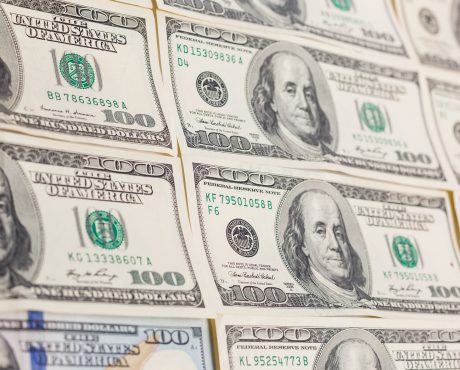A Top Dividend Stock for the “Lazy” Investor
If you are a passive income investor, there’s one question you should ask before adding a dividend stock to your portfolio: will the stock give you peace of mind?
You see, when it comes to dividend stocks, analysts often look at the yield, revenue, profits, payout ratio, and so on. And those are important things to check out. At the end of the day, you want to own companies that not only offer generous yields, but also have solid-enough financials to support their dividend policies.
But things never really stay the same. A company could be doing great in one year, but if something happens the next year—such as a rise in input costs or a change in consumer preference—its business could be seriously hurt. And its dividend policy might be in jeopardy.
Therefore, what investors often have to do is follow the companies in their portfolios closely. Any new information coming out of these companies has to be analyzed so investors can re-evaluate their stakes in their stocks.
That sounds like a lot of work, especially if you are a passive income investor who just wants to sit back, relax, and enjoy the dividend checks rolling in.
The good news is, there are companies with businesses so durable that you don’t really have to pay attention to all the press releases.
Johnson & Johnson (NYSE:JNJ) is a good example of such a company.
This business started back in 1885 by making a line of ready-to-use surgical dressings. Today, Johnson & Johnson is a multinational corporation with three main operating segments: “Consumer,” “Pharmaceuticals,” and “Medical Devices.” (Source: “2018 Investor Fact Sheet,” Johnson & Johnson, last accessed September 26, 2019.)
With a market capitalization of over $340.0 billion, JNJ has become one of the biggest players in the healthcare industry.
To see how dominant the company is, here’s a fact: around 70% of its sales come from products with the No. 1 or No. 2 global market share position.
To the average consumer, JNJ is known for its consumer products. Over the decades, many of the company’s brands, such as “Tylenol,” “Band-Aid,” “Johnson’s Baby,” and “Aveeno” have become household names.
Still, Pharmaceutical is by far Johnson & Johnson’s biggest segment. The company develops treatments in a wide range of therapeutic areas, including cardiovascular/metabolism, immunology, infectious diseases, neuroscience, and oncology. In the company’s most recent quarter, pharmaceutical sales accounted for more than half of Johnson & Johnson’s total revenue. (Source: “2nd Quarter 2019 Results,” Johnson & Johnson, last accessed September 25, 2019.)
The neat thing about JNJ being a healthcare giant is that the demand for the company’s products tends to stay relatively inelastic to how the economy is doing. That is, whether the economy is booming or in a recession, people who need medications will likely go to a pharmacy and fill their prescriptions.
As a result, Johnson & Johnson is running a business that is largely recession-proof.
A Reliable Passive Income Stream
Thanks to a recession-proof business model, Johnson & Johnson can pay reliable dividends to shareholders.
Right now, the company has a quarterly dividend rate of $0.95 per share, which comes out to a decent annual yield of 2.9%.
What’s more impressive than JNJ stock’s current yield is that the company has managed to grow its payout: it has increased its quarterly dividend rate every year for 57 consecutive years. (Source: “,” Johnson & Johnson, last accessed September 25, 2019.)
Just think about that for a moment. The world economy had plenty of ups and downs during the past 57 years, but in every one of those years, Johnson & Johnson managed to mail out dividend checks that were bigger than the ones in the previous year.
Of course, JNJ stock also had its ups and downs, but passive income investors didn’t have to pay attention to all the noise because the company kept on providing what they really needed: a steadily increasing passive income stream in the form of dividends.
And that, my dear reader, is why Johnson & Johnson stock is special.
The best part is, despite being around for well over a century, the company still found ways to grow its profits so it could return even more cash to investors in the future.
According to its latest earnings report, Johnson & Johnson generated adjusted earnings of $2.58 per diluted share. The amount not only represented a 22.9% increase from the $2.10 per share earned in the year-ago period, it also easily covered JNJ stock’s $0.95 per-share dividend declared and paid during the quarter. (Source: “Johnson & Johnson Reports 2019 Second-Quarter Results,” Johnson & Johnson, July 16, 2019.)
In the first six months of 2019, the company generated adjusted earnings of $4.68 per diluted share. During this period, it declared and paid total dividends of $1.85 per share. That translated to a very conservative payout ratio of 39.5%.
Looking back, we see that the company has been growing its adjusted operational earnings for 35 consecutive years.
Bottom Line on Johnson & Johnson Stock
Despite all the dividend hikes over the decades, Johnson & Johnson was paying out just a small amount of its adjusted profits. Combined with a growing bottom line, the company is well-positioned to keep raising its payout to shareholders.
Adding in the recession-proof nature of this business, it’s easy to see that JNJ stock fits nicely in a “set-and-forget” passive income portfolio.
